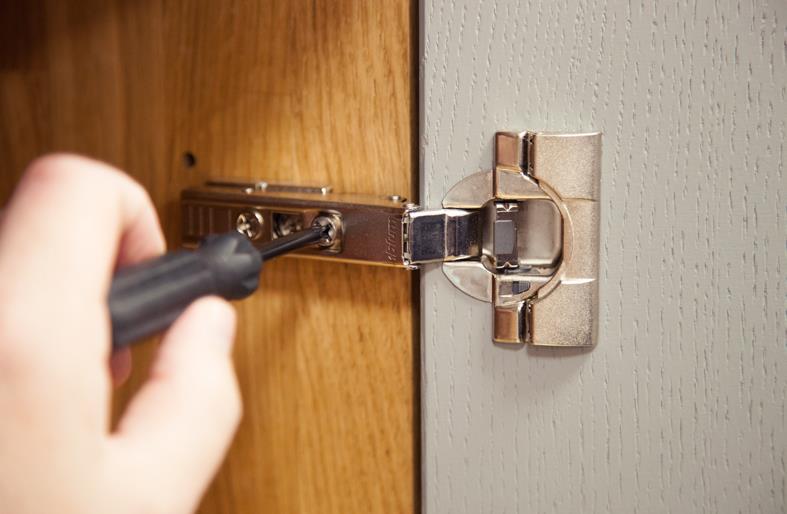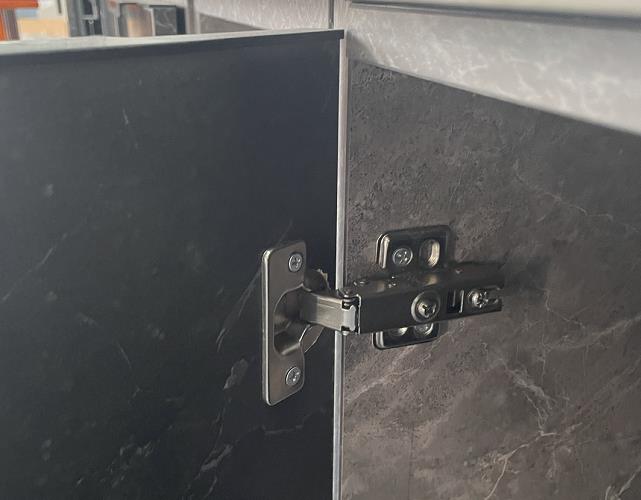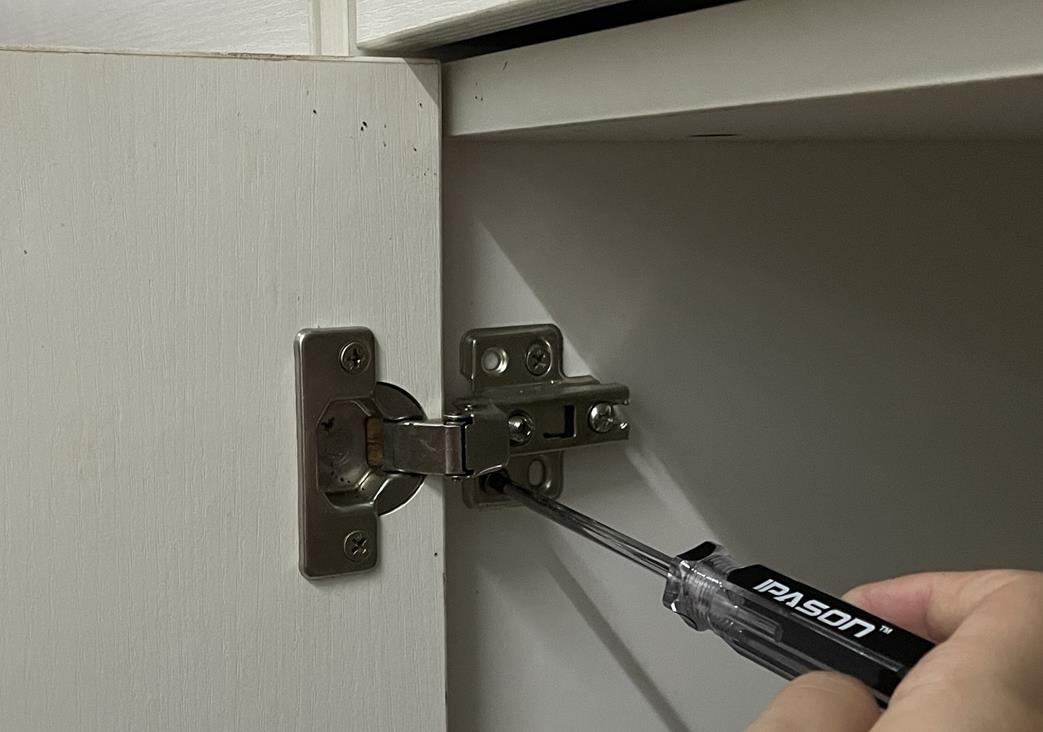How To Adjust Overlay Cabinet Hinges?
When your cabinet door hinges do not work smoothly or when it produces irritating noise while opening, there needs some fixing or adjustments. Many also ask the solution to how to take cabinet doors off hinges, but the first thing to fix issues is to adjust hinges and try to solve them. So, this article shows how to adjust overlay cabinet hinges, but before this, grab the right tools. First of all, you have to figure out the problem. There is a solution according to the situation. Here, you will see the method to adjust hinges, common issues you might face, and solutions to particular. Naturally, cabinet hinges may create issues if they become crooked, loose, or start squeaking.
Common Steps To Follow For Adjusting Hinges Of Cabinets
All you need to do is –
- Step 1: Utilize Screw Driver
You need to utilize a screwdriver for straightening any crooked doors, misaligned doors, or overlapping doors. Take your step back and have a look at your cupboard or cabinet doors to check if they are straight, parallel to one another or not. If cabinet doors are not lined up, unscrew and reattach them.
Note: if cabinet doors are not aligned appropriately, they won’t close properly, making it challenging to adjust the hinge settings later.
- Step 2: Close Hinged Door All The Way
Close hinged door all of the ways; shut your cabinet door to conceal the inner cupboard or cabinet entirely. Take a few minutes to focus on a soft close hinge and find out the adjustment tab. Search for a silver or gray plunger in the center of the hinge. Try to pull on it with the fingertip to confirm that it is the adjustment tab.
This tab may appear slightly different depending on the hinge model, as some hinges sport movable adjustment levels.
So this is a simple and common step to adjust the hinges of cabinets, but let’s see solutions to different common issues that might take place.
Problem 1: Alignment Problems
Your main aim is to make them look correct while adjusting cabinet doors. But it does not mean that doors must be level or perfectly vertical or otherwise returned to the factory’s new position. This means that they look correct with surrounding cabinet elements, especially drawer fronts and neighboring doors. You end up tweaking doors a bit off-kilter so that they work together effectively and show consistent spacing. It need compromise between aligning the outside of the cabinet and outside door edge and aligning the inner edge with the neighboring door. The visible gap along the door edge or drawer front is known as a reveal. When you check the door for perfect alignment, you are usually checking reveals since they create dark and notable lines between elements of the cabinet.
Expert Tip: the only tool you require to adjust cabinet hinges is a screwdriver.
- Solution Step 1: Tight Loose Screws
Open up the cabinet door and look at the hinge part attached to the cabinet box. Two screws at the top and bottom of the hinge mount the hinge to the cabinet. Turn out these screws clockwise to ensure that the door is secure.
- Step 2: Adjust Door Up/Down As Necessary
If you are tightening screws and still it did not solve the issue, and the door is still high or low, look for screws that adjust the door up/down whenever needed. If there is no separate screw for the function, loosen two screws on both hinges, adjust the cabinet door to the appropriate height and retighten screws.

Source: Solid Wood Kitchen Cabinets
-
Step 3: Adjust Door Left Or Right
Utilize side-to-side adjustment to move the door left or right to align the door with the neighbor or the cabinet edges. You can adjust one or both hinges on every door depending on how much correction it requires. If the door appears to be tilting down to the right, turn the side-to-side screw on the top hinge so the hinge pulls closer to the cabinet box’s side, moving the top of the cabinet door to the left. If it does not work well, adjust the side screw on the bottom hinge to move the hinge away from the cabinet and move the bottom of the door to the right side.
- Step 4: Adjust Door In/Out
Utilize depth adjustment screw for moving door in/out concerning cabinet. As doors can warp a bit with seasonal humidity changes, the cabinet door may pull away from the box at the top or bottom rather than meeting box flush while the door is closed. It causes the door to bounce when it closes. If the cabinet door does not meet at the top, adjust the hinge present at the top towards the cabinet and/or adjust the hinge present at the bottom away from the cabinet. If the door is gapped at the bottom, do reverse it.
- Step 5: Test Cabinet Door
Close the cabinet door after every minor adjustment to ensure that you move it in the right direction and check whether it requires more adjustment. It is a trial and error procedure, and fine-tuning is the game name.
Problem 2: Cabinet Doors Rubbing Against
If you have double cabinet doors that rub while closing, you can correct the issue by adjusting each cabinet door’s hinges.
- Solution:
Look at two screws on the hinge, loose screw closest to the cabinet door a bit enough for allowing you to adjust the hinge to the right or left. You will have to try one direction per time. Check to make sure that doors of cabinet rub no longer at the end of every attempt. If needed, repeat the procedure and do not forget to try other directions. Be careful avoiding ruining the alignment of the doors.
Problem 3: Cabinet Hinges Too Stiff
If age has made cabinet door hinges a bit tighter than usual, you can resolve and fix the issue with adjustment.
- Solution:
First of all, repeat the procedure to move the hinge to the left and right. If it does not solve the problem, adjust the hinge up/down by unscrewing the base plate holding hinge. All you need to do is change the plate slightly in either direction, screw it back and try closing the door. Adjusting the hinge up/down position may correct the issue.
Conclusion
Some common problems may arise due to the hinges of the cabinet. So to adjust the hinges, follow some steps one by one. Identify your cabinet hinge issue and solve it accordingly.


